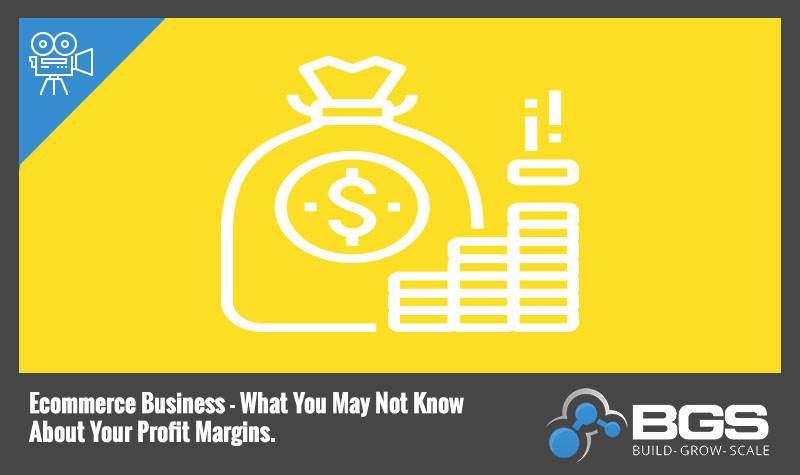What You May Not Know About Your Ecommerce Profit Margins and Will Give You Powerful Insights

Video Highlights
- 0:07 MarketingSherpa article
- 0:17 The different between low 6 figure range businesses and 7 figure businesses
- 1:02 Profit Margins are why they are stuck in 6 figures
- 1:08 Gross Margins and what you don’t understand
- 1:19 Defining gross Margins
- 2:35 Why it’s difficult for businesses to have money left over.
- 3:48 Examples of Tanners profit margin.
Hey guys, Taylor Larson here, and in this car talk I want to go over your profit margin. I want to talk about margins specifically.
I was reading an article the other day from MarketingSherpa, talking about the difference between businesses that were in the low six figures and businesses that were over a $1,000,000 in the e-commerce space.
The difference was that businesses in the six-figure range that were struggling and never really got beyond the six-figure mark were on average had gross profit margins below 30%. Whereas the businesses above a $1,000,000 had in gross profit margins in excess of 40% at the minimum.
Those numbers were skewed based on different subsets of the e-commerce industries, different categories and things like that. The thing that really drew me to that article and the statistics that was really important was the fact that these six-figure e-commerce businesses, of which there’s many more than there are $1,000,000 e-commerce businesses, are struggling, and why they’re still stuck at a six-figure business is because of their margins.
When we talk about a gross margin, this is something that people really get wrong anyway. They don’t really realize what we’re talking about with the profit margin. They just kind of gloss over it or think that the gross margin is the real margin.
The gross profit margin is the difference between what you pay for the product, the actual cost of goods, and what sort of cost you for that product, and the price you sell it for.
Okay. That’s the major gross profit. If you buy a product for 20, you sell it for 40. Your gross profit is $20 or, in this case, 50%. Okay. However, most e-com businesses, as this MarketingSherpa study attested to, have a gross margin of at best less than 30%.
Now what that means is, after they subtract the cost of the product, that doesn’t account for any kind of advertising, marketing, overhead, taxes, any other expenses of running your business.
Let’s say you have a 10% cost of acquisition, the cost of acquiring a customer for every product you sell. It’s 10%. If your gross profit margin is 30% and you subtract 10 more percent for your cost of acquisition, now you’re at a 20% profit margin. You still haven’t factored in your overhead, your storage fees, your internet, your salaries, anything like that, any of your actual fixed cost or regular costs or anything like that. All you factored in is your advertising.
When your gross profit margin is so low, it makes it very hard for you to have any money left over.
When you get down to your actual net profit, which is the actual profit you have after taxes and any interest or debt payments you have, that number could be very, very little. It’s really important that you guys learn to build real profit margins into your business, and you understand the different types of ecommerce profit margins, how they affect you and what your real numbers are.
I would venture to say that if you actually did the numbers in your business and figured out what your actual ecommerce profit margins are per product that you sell, it would be a very different number than what you tell people your profit margins are, when you actually do it.
It would shock the hell out of you. I urge you to, kind of, learn a little bit about ecommerce profit margins and try to have a higher profit margin. Engineer one. You mark your products up no less than 150% mark up, and then doing that gives you a rough number where most of the time you can get to a better gross profit margin, which gives you a better operating margin, which gives you an even better net profit margin.
In our business, we mark up our products in such a way that we wind up with a gross profit margin of no less than 60%. When we’re looking for a new product or when we’re getting ready to launch one or whatever, we make sure that we have a 60% gross profit margin. That way we have the ability to spend, roughly, say 20% on advertisements and overhead and still wind up with a 35-40% net margin at the end of the day.
We want our net margin to be what most businesses’ gross margin is.
When you engineer your business like that, and you build out these margins, it makes it so much easier to stay in business, thrive and really pocket some serious cash. Think about your margin. Do some math. Figure out what your actual margin is and see what you can do to make it better.






